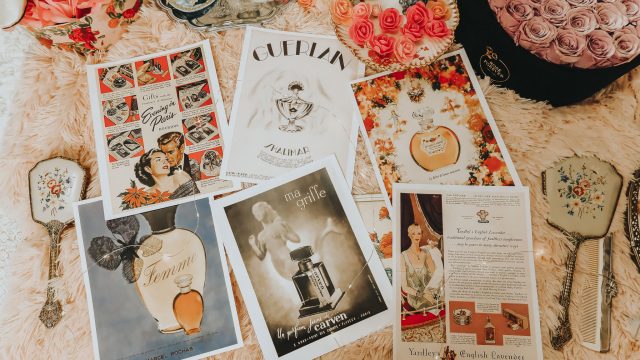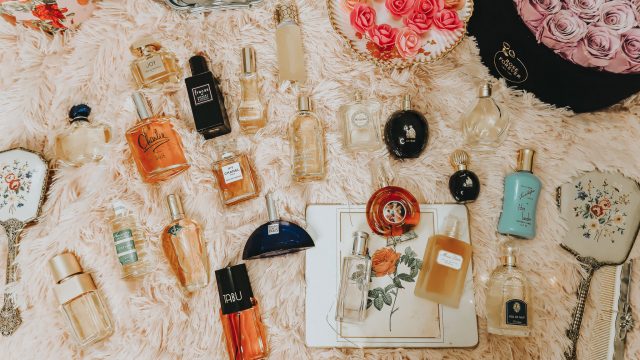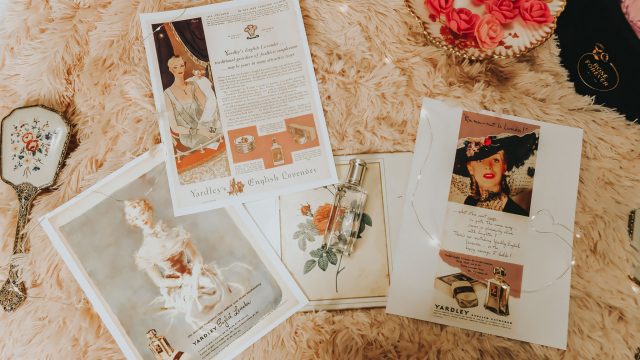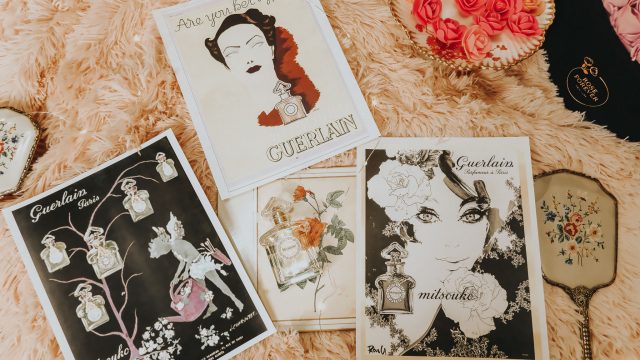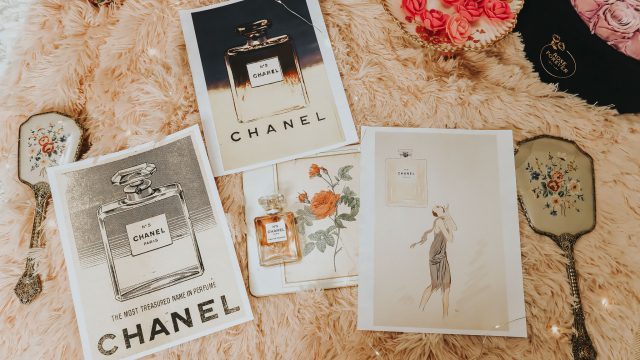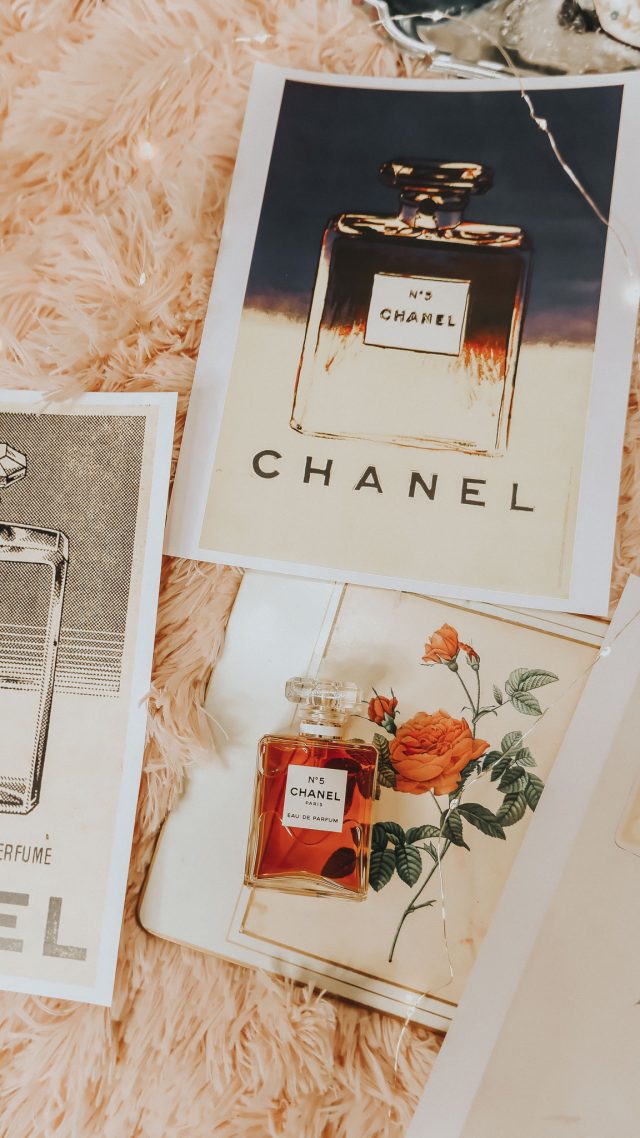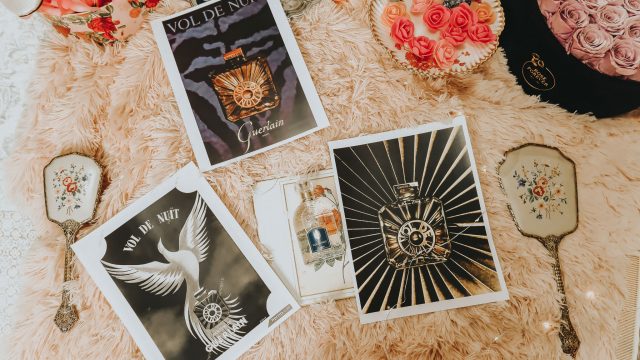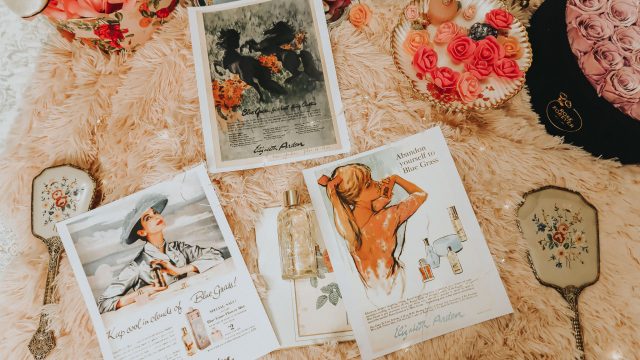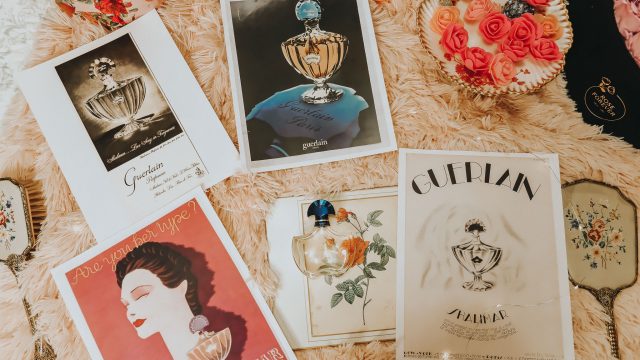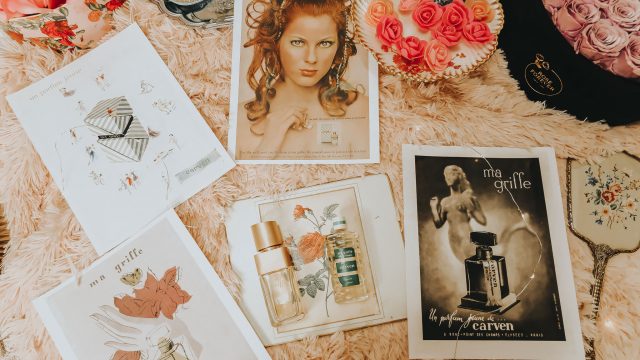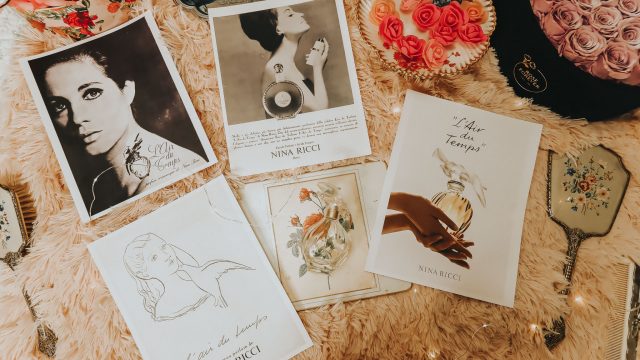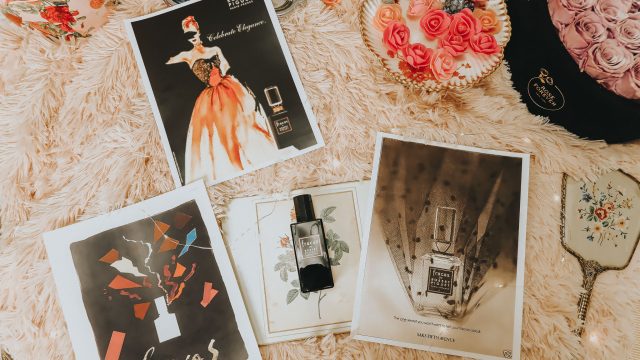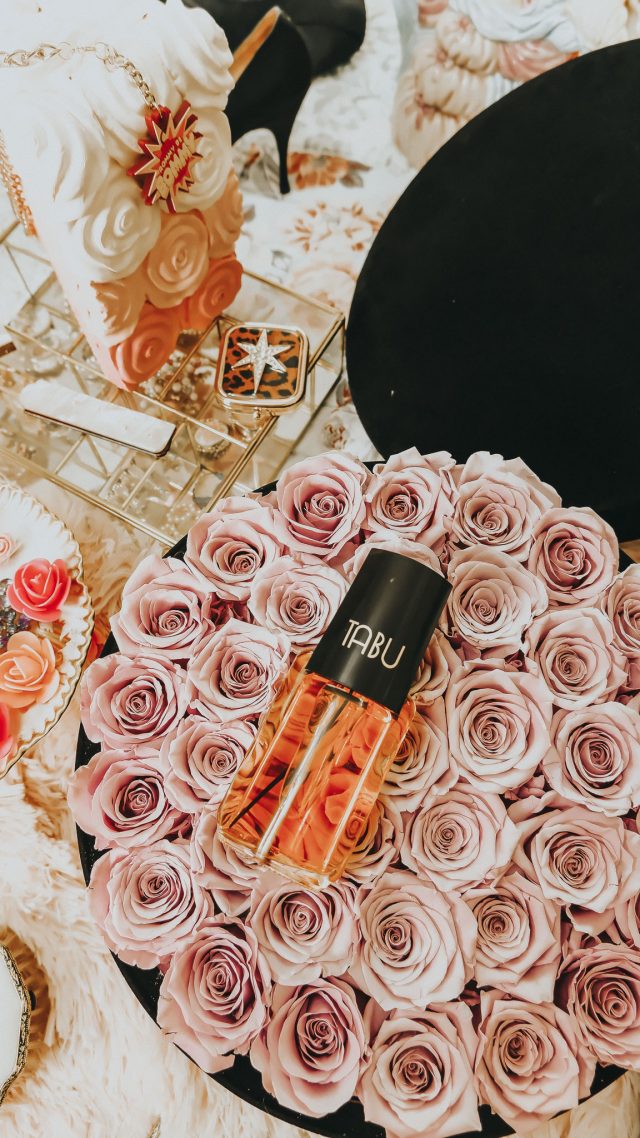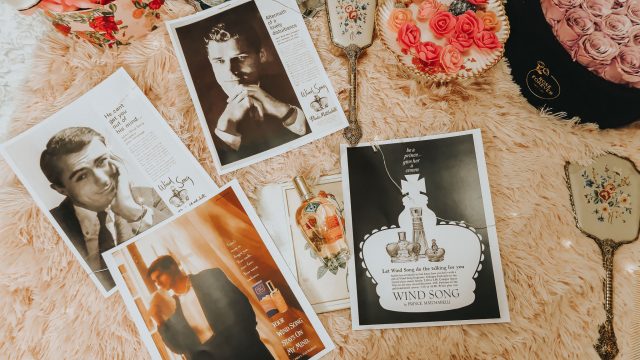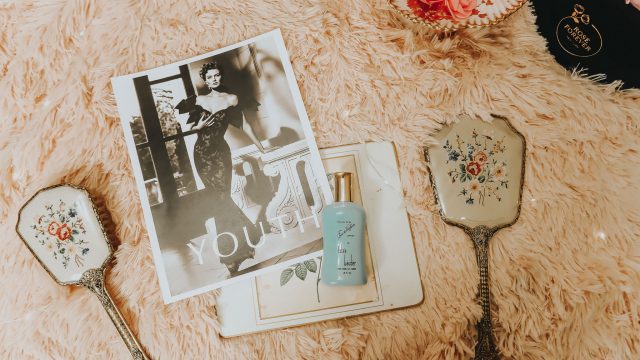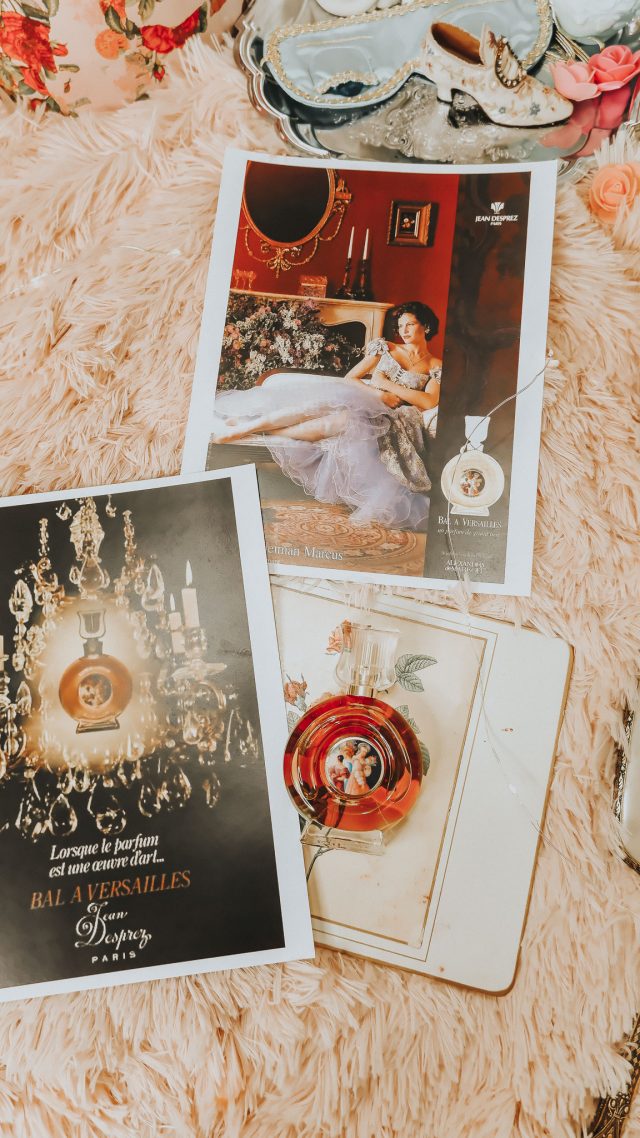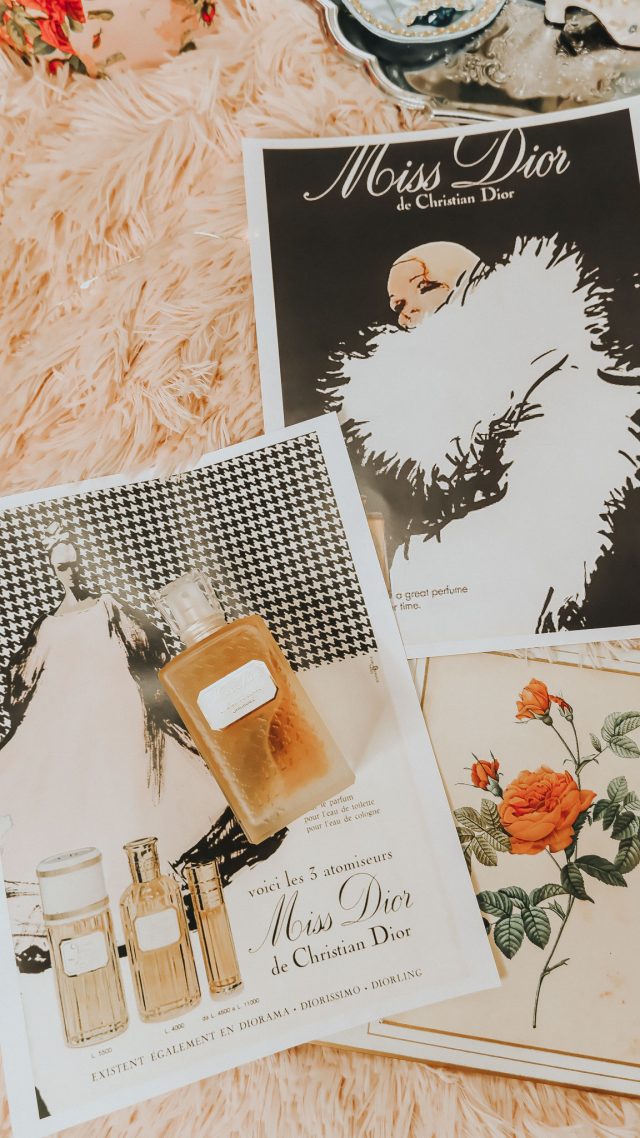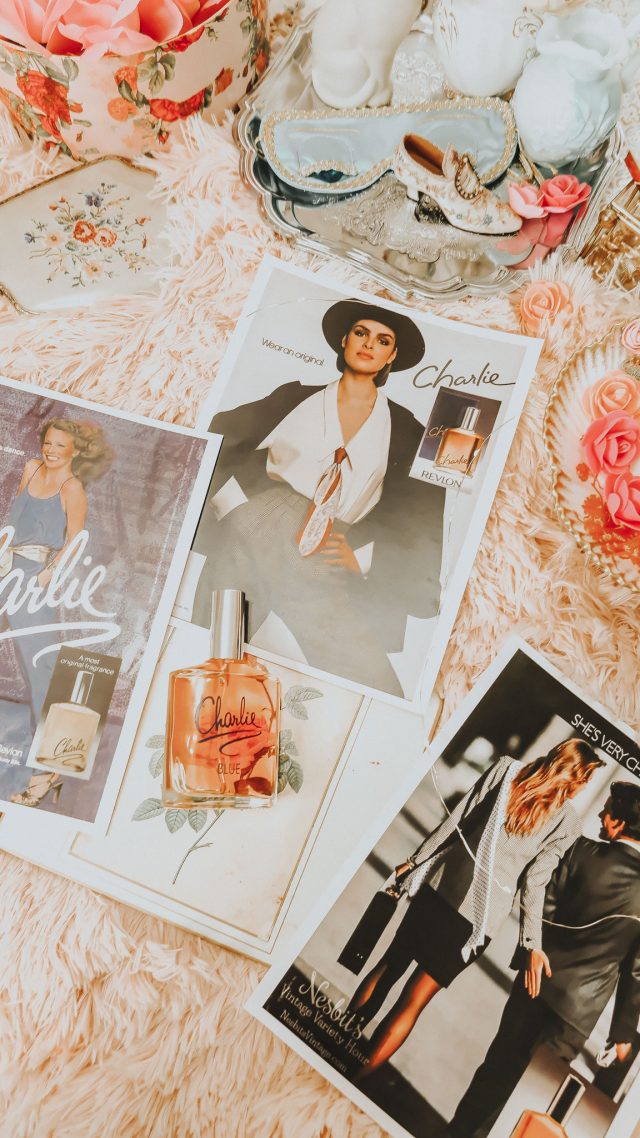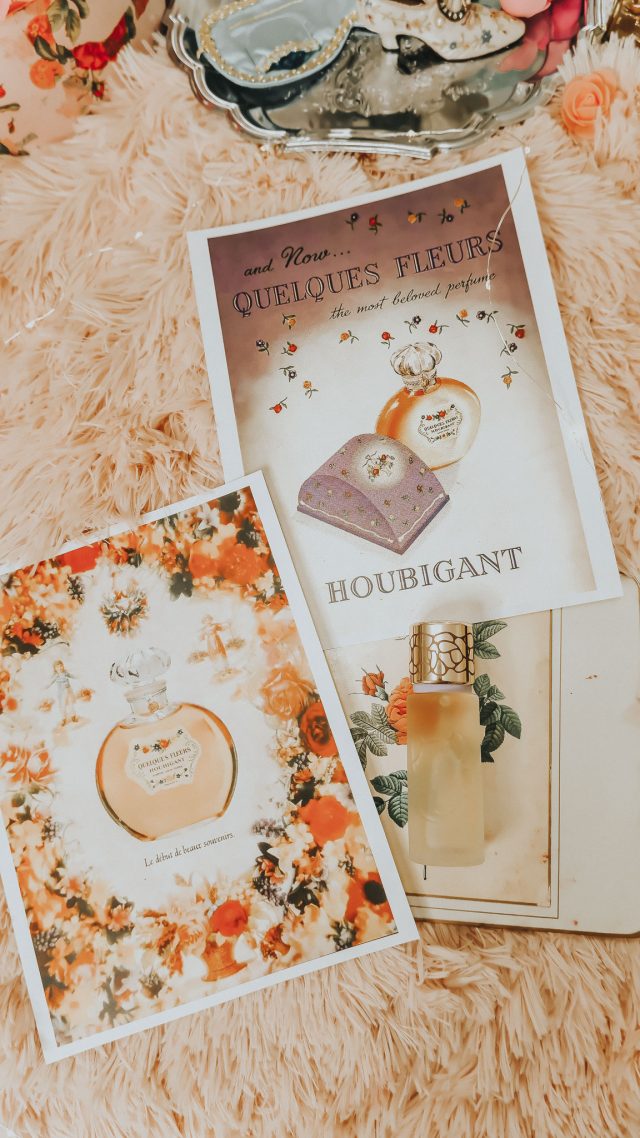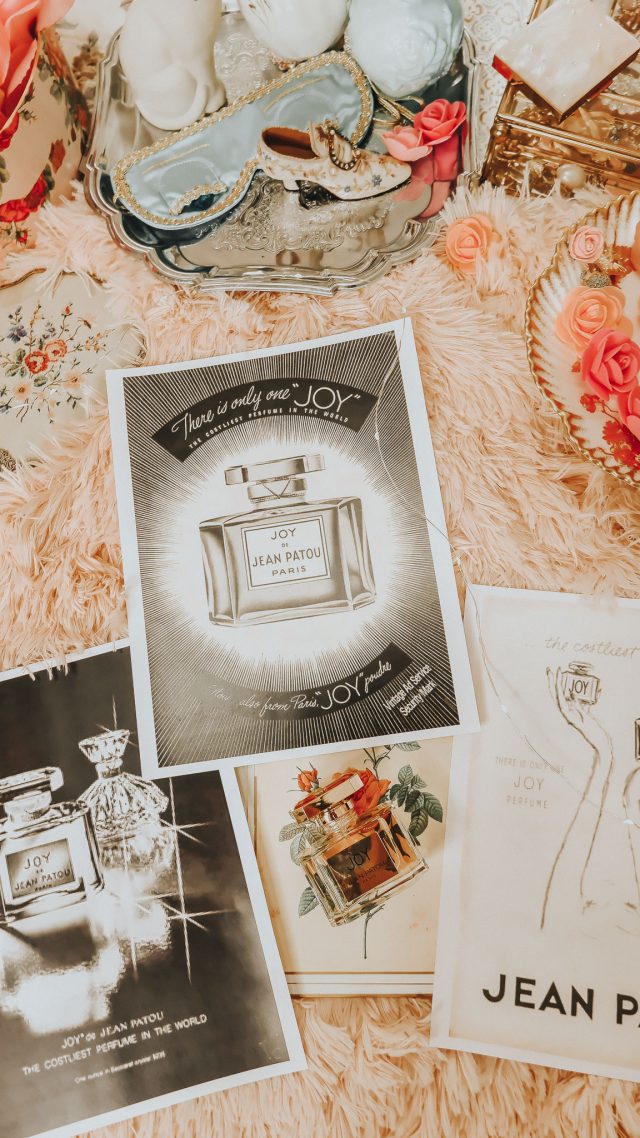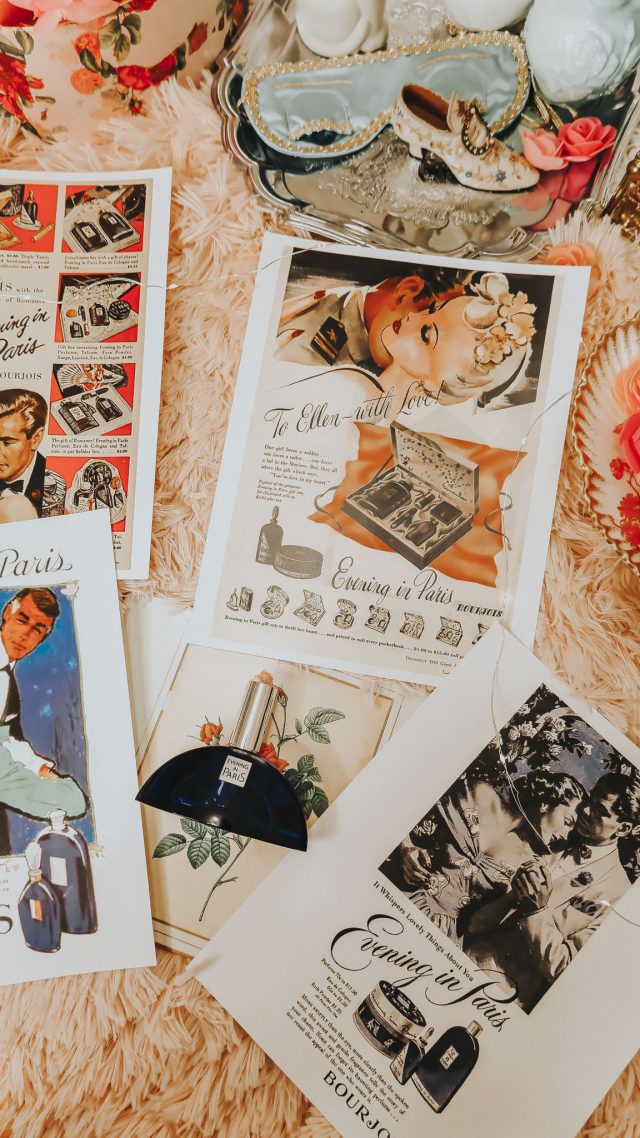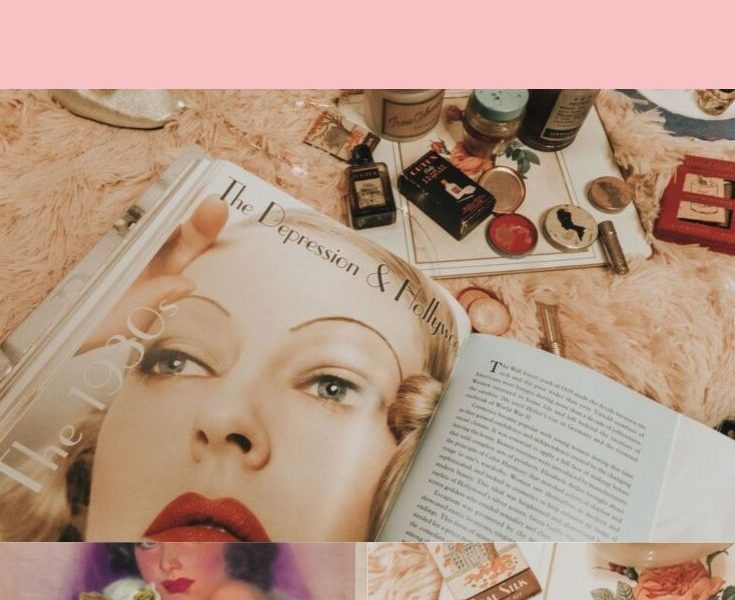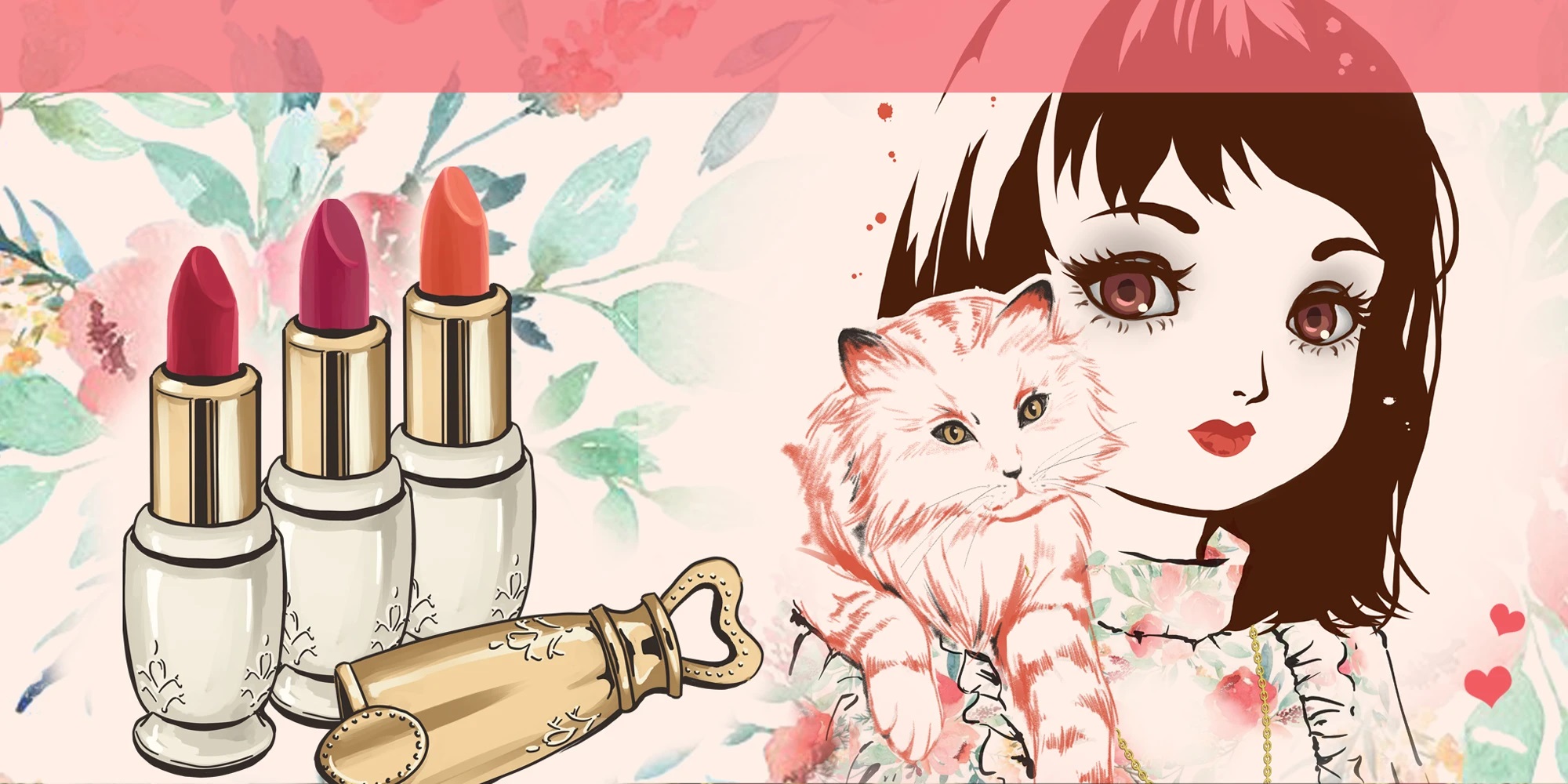Hello lovelies, I created a list of the top twenty perfumes that defined the 20th Century. It was so hard to narrow this down to just twenty, but in my opinion, these are the most significant perfumes of the 20th century in terms of innovation and social significance.
Yardley’s signature scent is English Lavender, which was launched in 1873. English Lavender was popular during the Victorian Era in England and was imported to the USA in the 1880s where it became popular in American households. In 1967, the British model Twiggy became the face of Yardley. The company sold “Twiggy Eyelashes,” “Twiggy Paint,” and other cosmetics with her as the spokesmodel. Yardley became a symbol of “Swinging London” and was associated with the 1960s British youth culture of miniskirts, Carnaby Street, and mod fashions. English Lavender by Yardley is an Aromatic Fougere fragrance for women. Top notes are rosemary, eucalyptus, lavender, and bergamot; middle notes are clary sage, cedar, and geranium; base notes are tonka bean, musk, and oakmoss.
Perfumer Jacques Guerlain created Mitsouko in 1919. The perfume has remained continuously available ever since. Mitsouko is preserved in its original 1919 formulation in the archives of the Osmothèque, donated to the collection by Thierry Wasser. A masterpiece of balance and originality, Mitsouko marries a fruity note of peach with jasmine flowers, and May rose. The mysterious dry-down of the fragrance blends spicy notes with those of underbrush and vetiver.
Chanel No. 5 was the first perfume launched by French couturier Gabrielle “Coco” Chanel in 1921. The scented formula for the fragrance was compounded by French-Russian chemist and perfumer Ernest Beaux. The design of its bottle has been an essential part of the product’s allure. Top notes are neroli, ylang-ylang, bergamot, Amalfi lemon, and aldehydes; middle notes are iris, jasmine, orris root, rose and lily-of-the-valley; base notes are vetiver, musk, sandalwood, patchouli, oakmoss, amber, vanilla, and Civetta.
Vol de Nuit or ‘night-flying’ was created in 1933. It was named after Antoine Saint Exupery’s second novel ‘Night Flight,’ a fragrant story of love and romance of the first years of aviation. The dark amber-colored bottle has a relief of a moving aircraft propeller. The green galbanum top note is surprising. The cocktail of blended flowers at its heart is like fireworks, where daffodil, violet, carnation, jasmine, and rose reveal their assertive and impertinent character. At once, a chypre, woody and exotic, Vol de Nuit is inimitable.
Created sometimes around 1934 or 1936, the perfumer is George Fuchs (of Fragonard). Blue Grass was created to celebrate the scent of the grassy pasture fields where Arden bred her famous Thoroughbreds. To backtrack only a bit, Florence Graham (EA’s given name) is somewhat a woman after my own heart.
Shalimar was re-released in 1925 at the International Exposition of Modern Industrial and Decorative Arts. Jacques Guerlain was inspired by Mumtaz Mahal, the wife of Shah Jahan, Mughal emperor of India, and for whom the Taj Mahal in Agra and the Shalimar Gardens in Lahore were built. A flight of flowers and bergamot whips up the top notes with a breeze of freshness. The heart is warmed by enveloping and delicately powdery notes of iris, jasmine, and rose. To conclude, the presence of vanilla, rounded balmy notes, and the gourmand warmth of tonka bean orchestrate a sensual symphony for the dry-down.
Ma Griffe was launched in 1946 by the design house Carven. It was created by nose Jean Carles, who had completely lost his sense of smell by that time.
L’Air du Temps is a women’s perfume by the French fashion house, Nina Ricci. It was created in 1948 by the French perfumer Francis Fabron, in collaboration with Nina Ricci’s son Robert (1905–1988), who sought to expand the house’s business into an in-house perfumery.
Fracas was first launched in 1948 and then reissued in 1998. Intoxicating fragrance in Parisian style, known for its refined simplicity, and as an object of desire for women all over the world. Fracas is glamorous and comfortable at the same time, modern and provocative.
Tabu is a feminine perfume by Dana. The scent was launched in 1932, and the fragrance was created by perfumer Jean Carles. Tabu was Dana’s very first fragrance. It has top notes of bergamot, coriander, neroli, orange, and spices; a heart of clove bud oil, clove, jasmine, narcissus, oriental rose, and ylang-ylang; and a base of amber, benzoin, cedar, civet, moss, musk, patchouli, sandalwood, and vetiver.
Prince Matchabelli – Wind Song
Wind Song is a feminine perfume by Prince Matchabelli. The scent was launched in 1952. Prince Matchabelli is a perfume line. It was first designed by Prince Georges V. Matchabelli, who was an amateur chemist. Georges Matchabelli was a Georgian prince and Georgian ambassador to Italy, but fled the Soviet Union and emigrated to the United States after the Russian Revolution.
Ernest Beaux created the perfume “Soir de Paris” (“Evening in Paris”) for French perfumer Bourjois in 1928. Established in Paris in 1863 to manufacture makeup and face powders, Bourjois has been making perfume since 1900. “Evening in Paris” was originally sold in a cobalt blue bottle designed by Jean Helleu.
Estée wanted to find a way for women to buy their perfume, so in 1953 she created Youth-Dew, a bath oil that doubled as a skin perfume. This innovation took the cosmetics industry by storm, changing the way fragrance was sold and transforming the fledgling start-up company into a multimillion-dollar business. Youth Dew is a feminine perfume by Estée Lauder. The scent was launched in 1953, and the fragrance was created by perfumer Josephine Catapano.
Jean Desprez – Bal a Versailles
Jean Desprez used the purest, most expensive natural ingredients-more than 300 of them-when he composed his masterpiece Bal à Versailles in 1962. For the past decades, this original formula has been held in safekeeping by the perfumers in France.
In 1947, Dior named his debut fragrance Miss Dior as a tribute to her. He founded the house of Christian Dior on December 16, 1946, at 30 Avenue Montaigne Paris, backed by Marcel Boussac, a cotton-fabric magnate.
Miss Dior was created by Jean Carles and Paul Vacher. Top notes are aldehydes, gardenia, galbanum, clary sage, and bergamot; middle notes are carnation, iris, orris root, jasmine, neroli, lily-of-the-valley, rose and narcissus; base notes are labdanum, leather, sandalwood, amber, patchouli, oakmoss, and vetiver.
Revlon added “Charlie” brand perfume in 1973. The perfume was launched behind an ad campaign that featured model Shelley Hack wearing pantsuits—a change from the dresses and romance in previous perfumery advertising—that was meant to target a more liberated and independent woman.
Giorgio Beverly Hills – Giorgio Beverly Hills
Giorgio Beverly Hills is an American brand founded by Fred and Gayle Hayman in 1961. Named after the luxury boutique whose sunny yellow and white striped awning inspired the perfume’s packaging, the fragrance of the same name would go on to become one of the most iconic fragrances of the 1980s.
Quelques Fleurs is an early floral aldehydic perfume that inspired, in particular, the creation of Chanel No. 5 in 1921, with a detour for Ernest Beaux, the nose of No. 5, via Le Bouquet de Catherine (1913) which was meant for the Russian market. In 1912 they introduced Quelques Fleurs, the first multi-floral bouquet ever created. Up to that time, floral fragrances had been mostly single flowers or were blended with herbs and other essences. The Genealogy of Perfumes cites Quelques Fleurs as an innovation that established a new fragrance classification and influenced different compositions for years afterward, including many of today’s essential fragrances.
Joy is a perfume created for Parisian couturier Jean Patou by perfumer Henri Alméras in 1929. It is considered to be one of the most magnificent fragrances created and is a landmark example of the floral genre in perfumery.
Arpege was launched by the French fashion house of Lanvin 1927 and was created by perfumer André Fraysse (the perfume responsible for all of Lanvin’s earlier scents, such as My Sin and Scandal) upon the request of Jeanne Lanvin for her daughter’s birthday.


